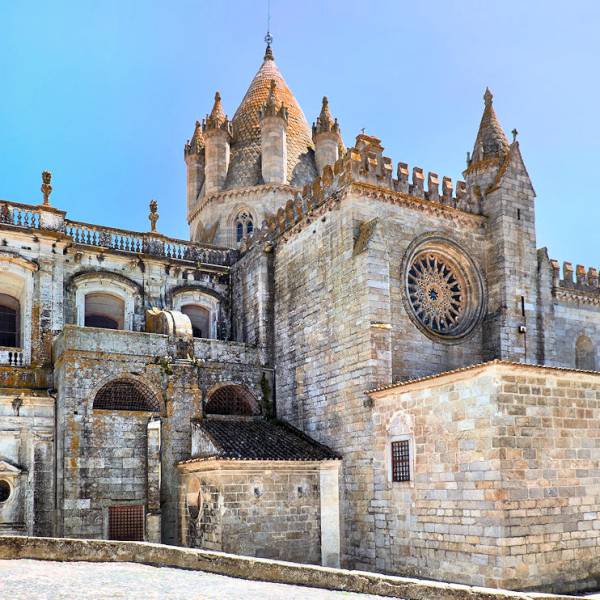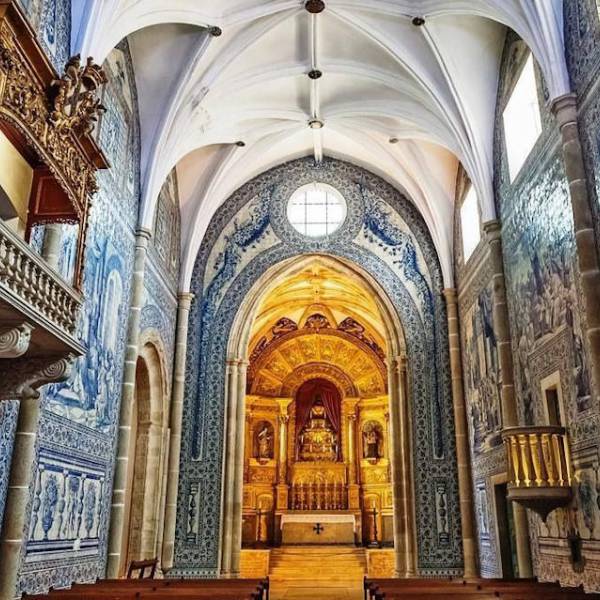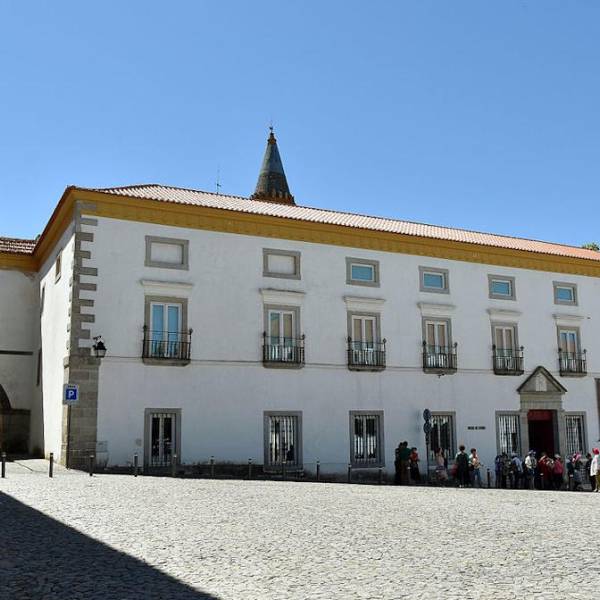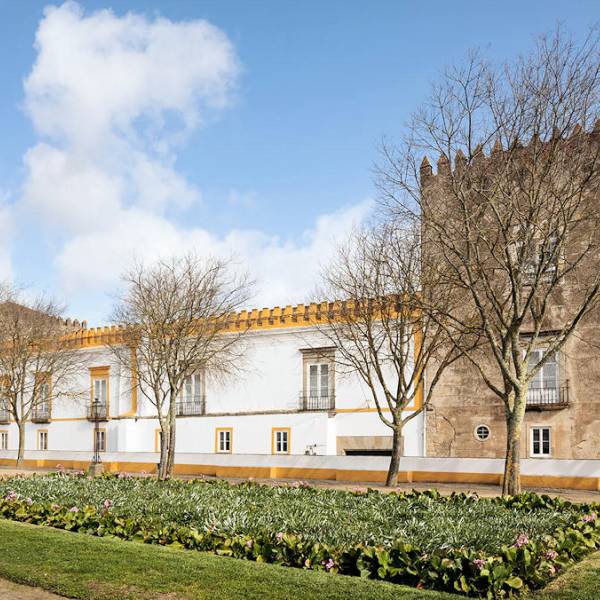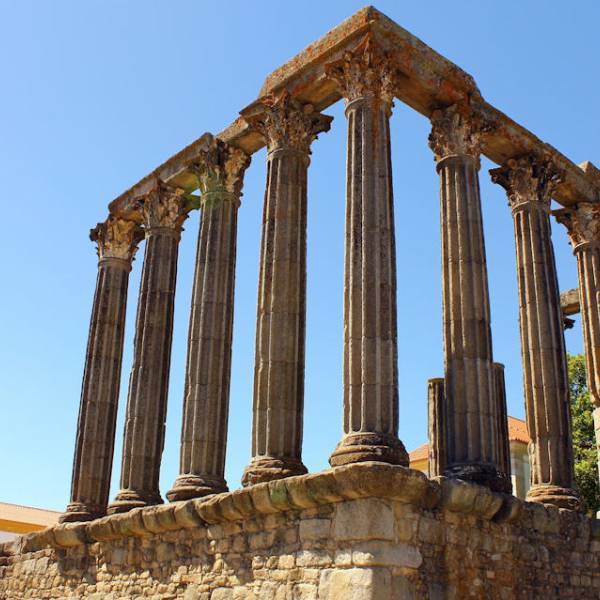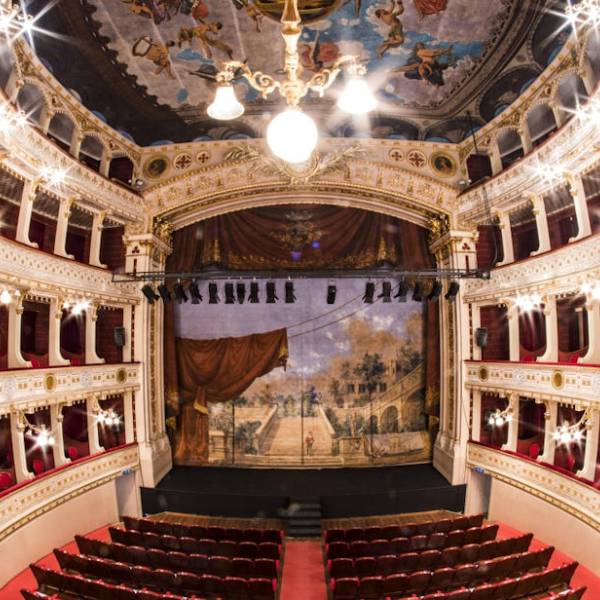Évora, with its historical significance and architectural treasures like Lóios Church, is an excellent day trip destination from Lisbon. Located approximately 130 kilometers east of the capital, Évora offers a glimpse into Portugal's rich cultural heritage. Visitors can explore the well-preserved medieval city walls, admire Roman ruins, and immerse themselves in the unique atmosphere of this UNESCO World Heritage site.
The architectural style of the Church of the Lóios reflects the transition from the Gothic period to the Manueline style, a uniquely Portuguese form of late Gothic architecture characterized by elaborate ornamentation and maritime motifs. The principal facade of the church is a sight to behold, featuring three registers that are vertically articulated. The Gothic portico, adorned with archivolts and flanked by imposing columns with sculpted vegetal capitals, welcomes visitors into the narthex. The intricate stonework and delicate carvings showcase the exquisite craftsmanship of the time.
As you step inside the church, you are greeted by a large nave with five sections adorned with ribbed ogival arches and heraldic buttons. The interior of the church is a harmonious blend of architectural elements, with solid ribbed edges discharged into thin columns featuring intricately carved vegetal capitals. The polychromatic ceramic panels lining the walls depict the life of São Lourenço Justiniano, adding a vibrant touch to the space.
One of the notable features of the Church of the Lóios is the founder's pantheon, located beneath the sub-choir. This sacred space houses numerous tombstones made of white marble, including the final resting place of D. Rodrigo de Sousa, his wife, his brother-in-law D. Rui de Sousa, and D. Branca de Vilhena. The pantheon serves as a poignant reminder of the historical figures and noble families associated with the church.
Throughout its history, the Church of the Lóios has undergone several modifications and restorations. The devastating earthquake of 1755 caused significant damage to the church, leading to the loss of many original features. However, efforts have been made to preserve and restore the church, ensuring that its architectural splendor and cultural significance endure.
Lisbon.vip Recommends
The Church of the Lóios is not only an architectural gem but also a place of spiritual contemplation and cultural significance. Its tranquil ambiance, adorned with sacred art and historical artifacts, invites visitors to immerse themselves in the rich tapestry of Évora's past. Whether you are an architecture enthusiast, a history buff, or a traveler seeking a moment of tranquility, a visit to Lóios Church is a must.
Standing proudly on Évora's clifftop escarpment, known as the city's acropolis, the church forms part of a complex of buildings that developed from the medieval castle. The proximity to the Roman Temple of Évora further enriches the historical landscape, creating a captivating fusion of ancient and medieval architecture.
In conclusion, the Church of the Lóios in Évora is a cultural and architectural treasure that transports visitors back in time. Its intricate design, blending Gothic and Manueline styles, is a testament to the skill and craftsmanship of the era. The church's historical significance, as a burial site for noble families and a place of worship, adds depth and meaning to its walls. A visit to Lóios Church is not just a journey through architectural history, but also an opportunity to connect with the vibrant cultural heritage of Évora and experience the spiritual aura that permeates this remarkable place.
Map View





